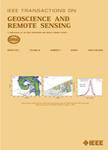版权所有:内蒙古大学图书馆 技术提供:维普资讯• 智图
内蒙古自治区呼和浩特市赛罕区大学西街235号 邮编: 010021

作者机构:Shanghai Jiao Tong Univ Sch Elect Informat & Elect Engn Brain Inspired Applicat Technol Ctr BATC Shanghai 200240 Peoples R China Natl Univ Def Technol ATR Key Lab Sch Elect Sci & Engn Changsha 410073 Peoples R China
出 版 物:《IEEE TRANSACTIONS ON GEOSCIENCE AND REMOTE SENSING》 (IEEE Trans Geosci Remote Sens)
年 卷 期:2025年第63卷
核心收录:
学科分类:0808[工学-电气工程] 1002[医学-临床医学] 08[工学] 0708[理学-地球物理学] 0816[工学-测绘科学与技术]
基 金:Science and Technology Innovation 2030-Major Project [2022ZD0208700, 2021ZD0114203] National Natural Science Foundation of China (NSFC) Project of Shanghai Gas Turbine Union Innovation Center
主 题:Adaptation models Neurons Computational modeling Remote sensing Brain modeling Satellites Meteorology Energy efficiency Approximation algorithms Sensors Brain-inspired computing neuromorphic computing remote sensing image processing spiking neural network (SNN) unsupervised domain adaptation (UDA)
摘 要:On-device computing, or edge computing, is becoming increasingly important for remote sensing, particularly in applications like deep network-based perception on on-orbit satellites and unmanned aerial vehicles (UAVs). In these scenarios, two brain-like capabilities are crucial for remote sensing models: 1) high energy efficiency, allowing the model to operate on edge devices with limited computing resources, and 2) online adaptation, enabling the model to quickly adapt to environmental variations, weather changes, and sensor drift. This work addresses these needs by proposing an online adaptation framework based on spiking neural networks (SNNs) for remote sensing. Starting with a pretrained SNN model, we design an efficient, unsupervised online adaptation algorithm, which adopts an approximation of the backpropagation through time (BPTT) algorithm and only involves forward-in-time computation that significantly reduces the computational complexity of SNN adaptation learning. Besides, we propose an adaptive activation scaling (AAS) scheme to boost online SNN adaptation performance, particularly in low time-steps. Furthermore, for the more challenging remote sensing detection task, we propose a confidence-based instance weighting scheme, which substantially improves adaptation performance in the detection task. To our knowledge, this work is the first to address the online adaptation of SNNs. Extensive experiments on seven benchmark datasets across classification, segmentation, and detection tasks demonstrate that our proposed method significantly outperforms existing domain adaptation and domain generalization approaches under varying weather conditions. The proposed method enables energy-efficient and fast online adaptation on edge devices, and has much potential in applications such as remote perception on on-orbit satellites and UAVs. The code is available at https://***/ThunderDavid/OASNN.